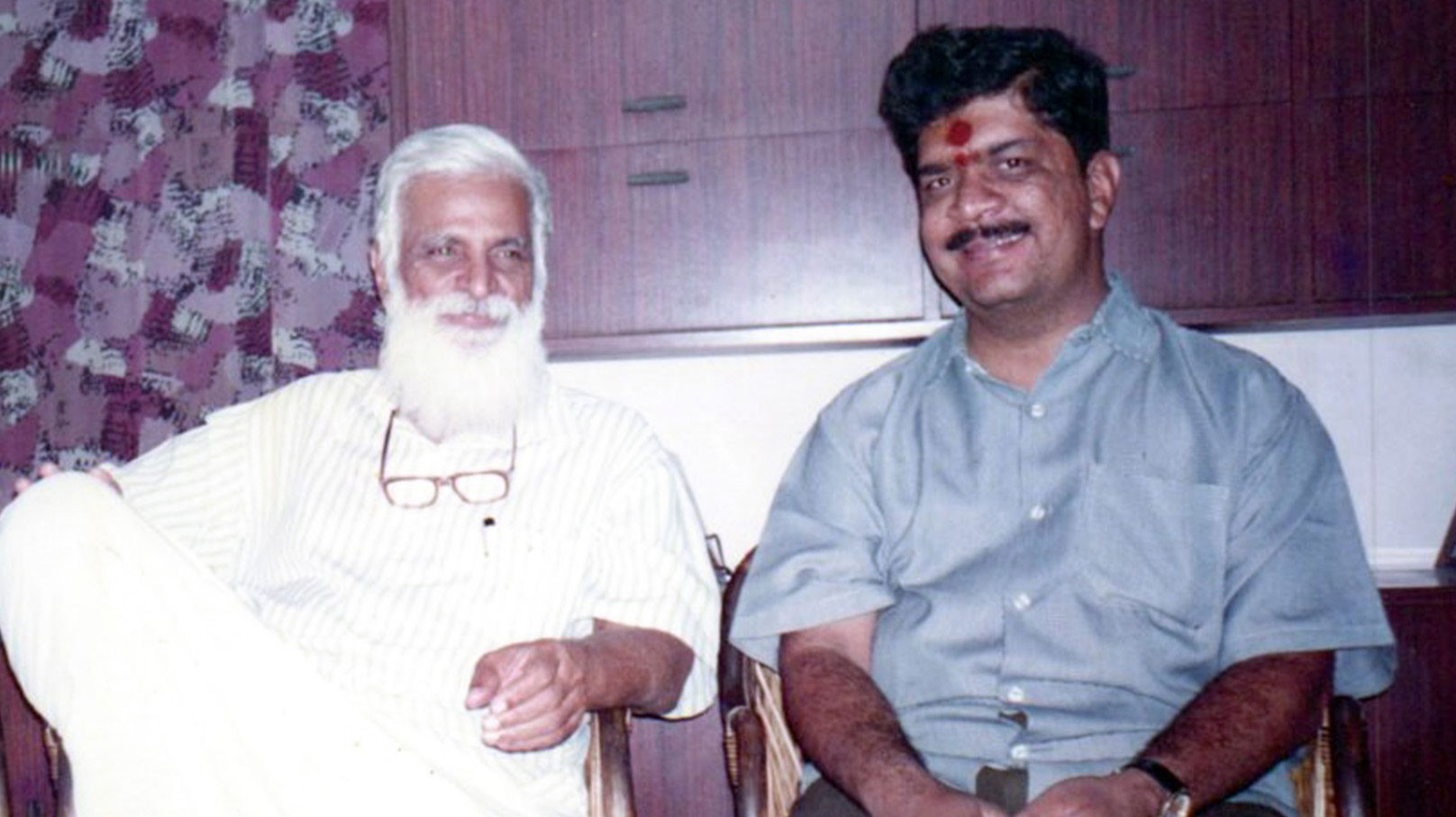- Edited

Guru - The preceptor ‘Ga’ is īśvara tattva as seen from the mapping of syllables to thirty-six tattvas, and ‘u’- jñana śakti, thus the human form of Lord with the power of knowledge is seen in this syllable. Next ‘ra’ denotes sparśa tattva and fire. These are indicative of three dīkṣā-śāmbhava śākta and māntrī done by him. ‘u’ as seen is knowledge - which is seen here in action as sādhana instructed by him. Thus we find grace anugraha of Lord has manifested in a form to save an aspirant by instructing him with a process - sādhana.
svabrahmarandhra kāmbhoja karṇikāpīṭhavāsinaṃ
śivarūpaṃ śvetavastra mālya bhūṣanulepinaṃ
dayārdra-dṛṣṭiṃ smerāsyaṃ varābhaya-karāmbujaṃ
vāmāṅka-gatayā pīta-vapuṣā aruṇa-veṣayā
padmavatyā-vāmakare śaktyā-dakṣabhujāvṛtaṃ
śrī……… nāthākhyaṃ śrīguruṃ cintayāmyahaṃ
sva brahmarandhra = On top of the head; kāmbhoja karṇika pīṭha vāsinaṃ = Residing in carp of lotus which is there; śiva rūpam = (with) auspicious form; śveta vastra mālya bhūṣanulepinaṃ = Wearing white garments, ornaments (sphatika mālā) and white sandal paste, dayārdra-dṛṣṭiṃ = having a merciful look in his eyes; smera āsyaṃ = smiling face; vara abhaya-karāmbujaṃ = Showing gestures of removing fear and granting boons; vāma aṅka-gatayā = on his beautiful left lap (meditated as seated); pīta-vapuṣā = Yellow in hue; aruṇa-veṣayā = wearing all red (red silk garments, ornaments- rubies, red sandal paste); padmavatyā-vāmakare = (she holds) a lotus in her beautiful left-hand; śaktyā-dakṣa bhuja āvṛtaṃ = embraced by her right hand, śrī……. nāthākhyaṃ = (the dīkṣā name of Śrī Guru) named as so; śrīguruṃ = the preceptor who is Lord in the guise of a human for me (aspirant); cintayāmi ahaṃ = I shall always keep in my mind.
Śrī Guru Pādukā
The following is the (revelatory stanza) uddhāra of Guru pādukā from Paraśurāma Kalpa Sūtra in Sarva Sādhāraṇa Krama for Raśmimālā chanting in the morning.
tāri-trikaṃsaptama-mudrāśiva-śakti-saṃvarta-pu-pañcama-purandara-va-ra-yūṃ śakti-śiva-kṣa-mānte vādi-va- ra-yīṃ śiva-bhṛgu-triśūla-bindu-bhṛgu-śiva-triśūla-visṛṣṭayaḥ śrī-pūrvaṃ sva-guru-nāmato 'ṣṭākṣarī ceti śrī-pādukā ca || PKS 10.32 II
tāri-trikaṃ = three praṇava in tradition of śrīvidyā are aiṃ hrīm śrīm; saptama-mudrā = seventh mudra of sarvarogahara cakra - khecari mudra (hskhaphreṃ); śiva-śakti-saṃvarta-pu-pañcama-purandara-va-ra-yūṃ = śiva is ‘ha’; śakti is ‘sa’; samvarta - fire deluge, denotes last of alphabets ‘kṣa’; ‘pu- pañcama’ - fifth syllable of ‘pa’ series, which is ‘ma’; purandhara is indra-his bīja ‘la’; va ra yūṃ as such. Thus we find this bīja hskṣmlvryūṃ; śakti-śiva-kṣa-mānte-vādi-va-ra-yīṃ - śakti-śivādi-va-ra-yīṃ, decoding same bīja as now hskṣmlvryūṃ said above, but ending with yīṁ, thus by a is now shkṣmlvryīṃ; śiva-bhṛgu-triśūla-bindu = śiva is ‘ha’; bhṛgu is ‘sa’ triśūla = au and bindu = anusvara (ṃ) will be hsauṃ; bhṛgu-śiva-triśūla-visṛṣṭayaḥ = bhṛgu is ‘sa’; śiva is ‘ha’; triśūla = au, visṛṣṭayaḥ is visarga (ḥ) will be hsauṃ shauḥ; śrī-pūrvaṃ sva-guru-nāmato = guru’s dīkṣā name preceded by śrī and aṣtākṣari = eight syllabled mantra śrī pādukāṃ pūjayāmi namaḥ; ceti śrī-pādukā ca = is śrī guru pādukā
This revealed mantra will be:
aiṃ hrīṃ śrīṃ hskhaphreṃ hasakṣamalavarayūṃ sahakṣamalavarayīṃ hsauṃ shauḥ
{(amuka)śaktyambā sahita} śrī (amuka) ānandanātha guru śrīpādukāṃ pūjayāmi namaḥ
Source: "Meditative Texts - Revised Thoughts on the Way" by Yogamba Sameta Atmanandanatha (Ramesh Kutticad)
Yogamba Sahita Atmanandantha (Ramesh Kutticad) is a Śrī Vidyā Guru from Chennai. He is associated with Guruji since 1996. Smt. and Sri Ramesh have painstakingly written the following scholarly, research. We're grateful to him for allowing us to make these articles available for the public.

